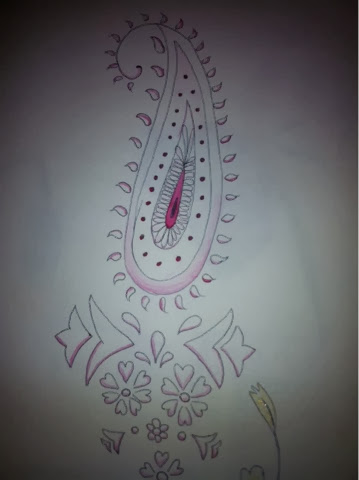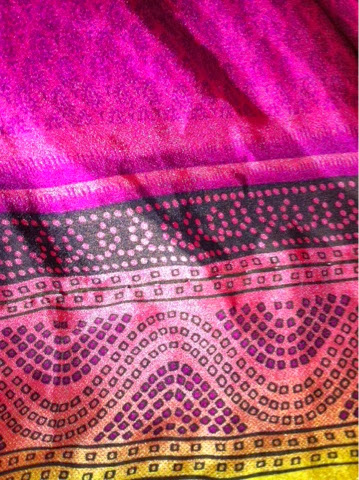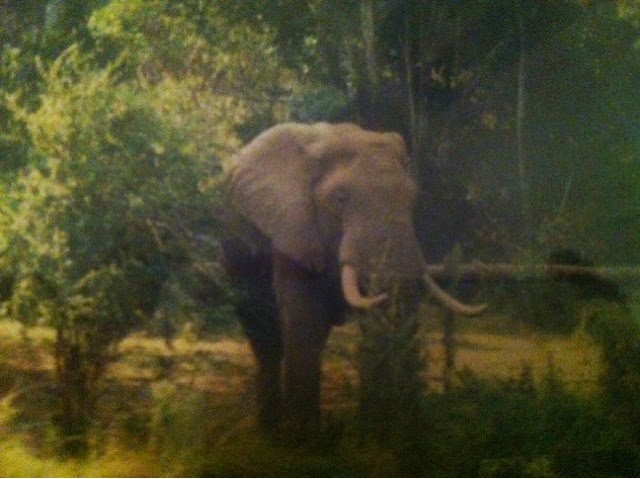Eva Campbell-Bharat (2011)
http://wp.evitaworks.com/galleries/artworks-eastern-woman
Eva Campbell is an artist that paints Asian women such as Indian women in sari's and geisha's.
Eva Campbell's piece 'Bharat' (pictured above) strongly relates to my theme of 'Indian celebrations' as it shows an Indian women looking as if she is going to a wedding or she is a bride, due to all the bright colours and the jewellery the woman is wearing in the piece. Bharat relates to my theme as in my sketchbook I have used drawing, oil pastel, paint and collage to make pieces of work that are inspired by sari's and jewellery from observation.
My drawings are from direct observation and I have looked closely at the beading on saris and beaded jewellery and the colours involved, representing the objects accurately.
I appreciate the use of colour that Campbell uses in her work as she mainly sticks to one primary colour per piece and then incorporates different shades and hues that are made using primarily that starting colour. For example, within 'Bharat' the primary colour she has mainly looked at seems to be yellow, which is why there is also many shades of orange in the piece as that is a colour primarily made up of yellow with some red to create a deeper tone. Campbell's use of similar colour and form in 'Bharat' shows a stylistic representation of form and pattern, which is also something I would like to interpret.
Campbell also explores indian pattern in detail as even in the background the detail is quite strong. Furthermore the detail is also quite repetitive, similar to a pattern as shapes such as swirls and flowers are quite frequently used, in this piece and many of her others.
I feel like Campbell's work falls between the work of Johanna Basford and the work of Chidi Okoye, as Campbell uses a lot of colour and tone within her pieces, similar to Okoye's piece 'hungry for the world' but she also incorporates a lot of detail in her work, similar to the pieces by Johanna Basford.
Campbell works mainly with water colour paints, acrylic and ink. This is so that she can create pieces with very vivid colour, without having to layer lots of colour on top of each other. However, she can also achieve softer paler colours with these mediums by adding water to them to dilute the colour. By using these materials to create her work, Campbell's pieces are often very vibrant and stand out.










































